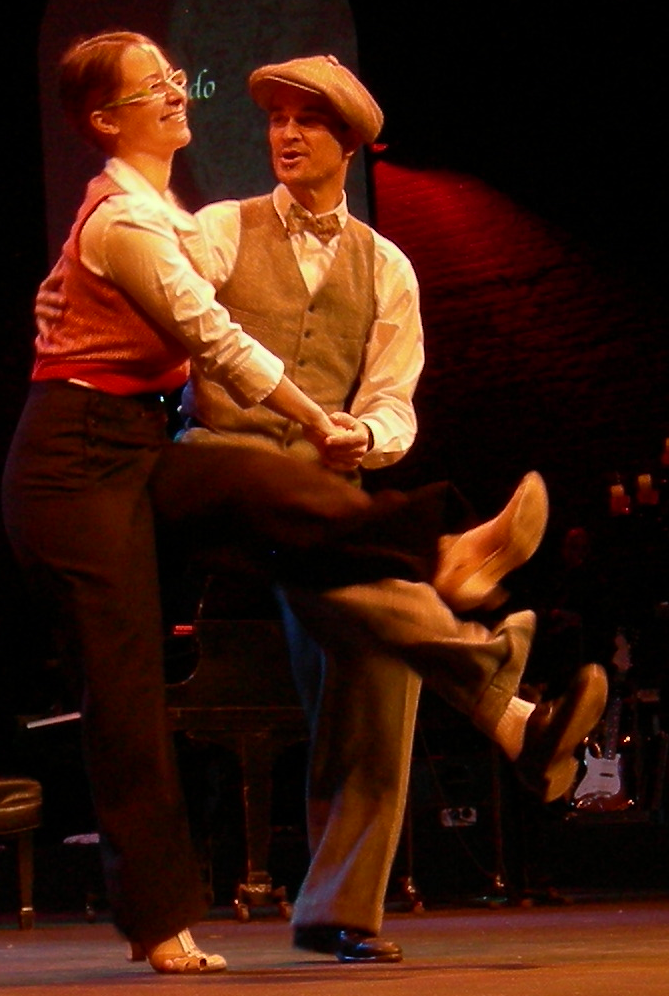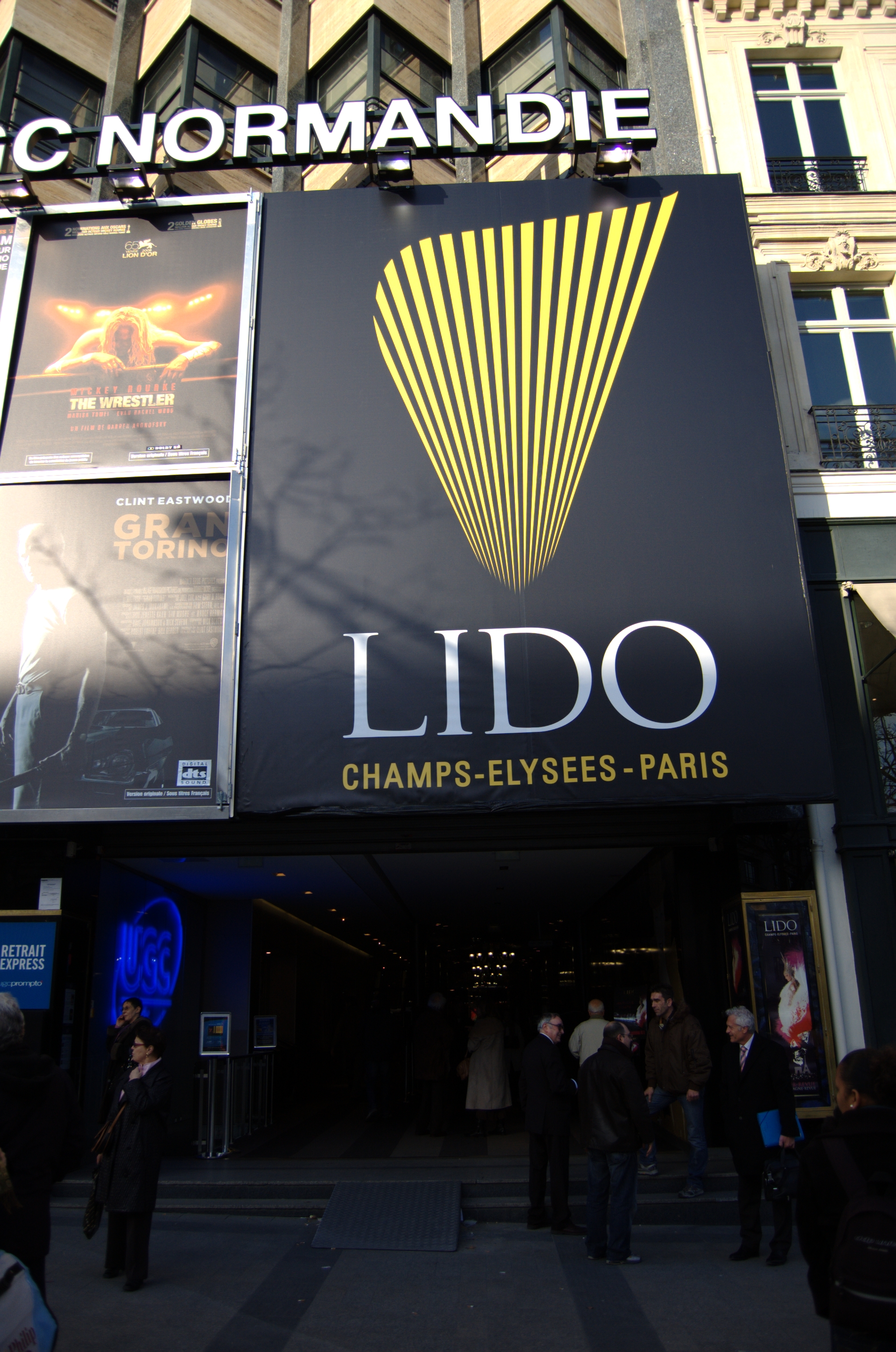|
El Gran Show (season 2)
Season two of ''El Gran Show'' premiered on August 14, 2010, on the América Televisión network. On October 30, 2010, Belén Estévez and Gian Frank Navarro were crowned champions, representing the city of Lima and whose dream was to treat Gian Frank's 4-year-old nephew who suffers from viral encephalitis, a disease that has him prostrate with scoliosis, blindness and seizures. Karen Dejo and Edward Mávila finished second, while Miguel Rebosio, Miguel "Conejo" Rebosio and Fabianne Hayashida finished third. Cast Couples The celebrities were introduced during the final of the previous season. In the first week were presented to the dreamers and the dreams of each one of them. Before the start of the program, Fiorella Avilés (Fernando Roca Rey's dreamer) retired from the show for health reasons, instead danced Katherine Mendoza (dreamer on El Show de los sueños (Peru), El show de los sueños), finally Whitney Misme came as an official dreamer from the second week. During the sh ... [...More Info...] [...Related Items...] OR: [Wikipedia] [Google] [Baidu] |
Gisela Valcárcel
Sonia Mercedes Gisela Valcárcel Álvarez (born 26 January 1963) is a Peruvian television Television presenter, hostess, actress, and businesswoman. She owns and manages the Amarige Beauty Salons & Spas in Lima. She is the director of women's magazines Gisela (magazine), ''Gisela'' and ''Amarige''. She also runs her own television production company called GV Productions (''El Show de los sueños (Peru)'', ''América Hoy'', ''El Gran Show)''. Early life Valcárcel was born on 26 January 1963. She is the daughter of Jorge Valcárcel and Teresa Álvarez. She studied at ''Institución Educativa Teresa González de Fanning''. Valcárcel was a minor when she became pregnant with her boyfriend Jorge Pozo. Once her daughter Ethel was born, Valcárcel started working as a secretary at a car company and was hired as an extra for theater performances. Career A she was working as a part-time receptionist on Panamerican televisión, channel 5, she publicly kissed the Venezuelan singer ... [...More Info...] [...Related Items...] OR: [Wikipedia] [Google] [Baidu] |
Pop Music
Pop music is a genre of popular music that originated in its modern form during the mid-1950s in the United States and the United Kingdom. The terms ''popular music'' and ''pop music'' are often used interchangeably, although the former describes all music that is popular and includes many disparate styles. During the 1950s and 1960s, pop music encompassed rock and roll and the youth-oriented styles it influenced. ''Rock'' and ''pop'' music remained roughly synonymous until the late 1960s, after which ''pop'' became associated with music that was more commercial, ephemeral, and accessible. Although much of the music that appears on record charts is considered to be pop music, the genre is distinguished from chart music. Identifying factors usually include repeated choruses and hooks, short to medium-length songs written in a basic format (often the verse-chorus structure), and rhythms or tempos that can be easily danced to. Much pop music also borrows elements from other styles ... [...More Info...] [...Related Items...] OR: [Wikipedia] [Google] [Baidu] |
Jazz Dance
Jazz dance is a performance dance and style that arose in the United States in the mid 20th century. Jazz dance may allude to vernacular jazz about to Broadway or dramatic jazz. The two types expand on African American vernacular styles of dance that arose with jazz music. Vernacular jazz dance incorporates ragtime moves, Charleston, Lindy hop and mambo. Popular vernacular jazz dance performers include The Whitman Sisters, Florence Mills, Ethel Waters, Al Minns and Leon James, Frankie Manning, Norma Miller, Dawn Hampton, and Katherine Dunham. Dramatic jazz dance performed on the show stage was promoted by Jack Cole, Bob Fosse, Eugene Louis Faccuito, and Gus Giordano. The term 'jazz dance' has been used in ways that have little or nothing to do with jazz music. Since the 1940s, Hollywood movies and Broadway shows have used the term to describe the choreographies of Bob Fosse and Jerome Robbins. In the 1990s, colleges and universities applied to the term to classes offered by ... [...More Info...] [...Related Items...] OR: [Wikipedia] [Google] [Baidu] |
Merengue (dance)
Merengue (, ) is a style of Dominican music and dance. Merengue is the national dance of the Dominican Republic and is also important to national identity in the country. It is a type of danced walk and is accessible to a large variety of people with or without dance experience. The music of merengue draws influence from European and Afro-Cuban styles and mainly uses instruments like guitars, drums, and a charrasca or metal scraper. The dance originated as a rural dance and later became a ballroom dance. Merengue has three distinct sections: the paseo, the merengue proper, and the closing jaleo which includes improvisation. Partners hold each other in a closed position. The leader holds the follower's waist with their right hand and the follower's right hand with their left hand at the follower's eye level. Partners bend their knees slightly left and right, thus making the hips move left and right. The hips of the leader and follower move in the same direction throughout the song ... [...More Info...] [...Related Items...] OR: [Wikipedia] [Google] [Baidu] |
Disco Dance
Disco is a genre of dance music and a subculture that emerged in the 1970s from the United States' urban nightlife scene. Its sound is typified by four-on-the-floor beats, syncopated basslines, string sections, brass and horns, electric piano, synthesizers, and electric rhythm guitars. Disco started as a mixture of music from venues popular with Italian Americans, Hispanic and Latino Americans and Black Americans "'Broadly speaking, the typical New York discothèque DJ is young (between 18 and 30) and Italian,' journalist Vince Lettie declared in 1975. ..Remarkably, almost all of the important early DJs were of Italian extraction .. Italian Americans have played a significant role in America's dance music culture .. While Italian Americans mostly from Brooklyn largely created disco from scratch .." in Philadelphia and New York City during the late 1960s and early 1970s. Disco can be seen as a reaction by the 1960s counterculture to both the dominance of rock music and the st ... [...More Info...] [...Related Items...] OR: [Wikipedia] [Google] [Baidu] |
Cumbia
Cumbia refers to a number of musical rhythms and folk dance traditions of Latin America, generally involving musical and cultural elements from American Indigenous peoples, enslaved Africans during colonial times, and Europeans. Examples include: * Colombian cumbia, is a musical rhythm and traditional folk dance from Colombia. It has elements of three different cultures, American Indigenous, African, and Spanish, being the result of the long and intense meeting of these cultures during the Conquest and the Colony. * Panamanian cumbia, Panamanian folk dance and musical genre, developed by enslaved people of African descent during colonial times and later syncretized with American Indigenous and European cultural elements. Regional adaptations of Colombian cumbia Argentina * Argentine cumbia * Cumbia villera, a subgenre of Argentine cumbia born in the slums * Fantasma, a 2001 group formed by Martín Roisi and Pablo Antico * Cumbia santafesina, a musical genre emerged in Santa Fe, ... [...More Info...] [...Related Items...] OR: [Wikipedia] [Google] [Baidu] |
Latin Pop
Latin pop (in Spanish and in Portuguese: Pop latino) is a pop music subgenre that is a fusion of US–style music production with Latin music genres from anywhere in Latin America and Spain. Originating in Spanish-speaking musicians, Latin pop may also be made by musicians in Portuguese (mainly in Brazilian Portuguese) and the various Romance Creole languages. Latin pop usually combines upbeat Latin music with American pop music. Latin pop is commonly associated with Spanish-language pop, rock, and dance music. History Latin pop is one of the most popular Latin music genres today. However, before the arrival of artists like Alejandro Sanz, Thalía, Luis Miguel, Selena, Paulina Rubio, Shakira, Carlos Vives, Ricky Martin, Gloria Trevi and Enrique Iglesias, Latin pop first reached a global audience through the work of bandleader Sergio Mendes in the mid-1960s; [...More Info...] [...Related Items...] OR: [Wikipedia] [Google] [Baidu] |
Aldo Díaz
El Gran Show (''"The Amazing Show"'') was a dance reality show airing since 2010 on América Televisión in Perú. The show is the Peruvian version of the Mexican television series ''Bailando por un sueño''. The show is hosted by Gisela Valcárcel, alongside Miguel Arce, who became co-host in season sixteen. Cristian Rivero was co-host in seasons one through five, Óscar López Arias co-hosted seasons seven through eight, Paco Bazán in seasons nine through fourteen and Jaime "Choca" Mandros in seasons fifteen, and Miguel Arce beginning with the sixteen season. Every season, celebrities and amateur dancers (''Dreamers'') are paired up. Celebrities have included actors, models, singers, athletes, television hosts, and comedians. The format is similar to ''Bailando por un sueño'' and '' El Show De Los Sueños'': 11 participants called "Dreamers" star in a dance competition in which the winner will realize a dream that becomes public knowledge, either to resolve a personal problem ... [...More Info...] [...Related Items...] OR: [Wikipedia] [Google] [Baidu] |
Vedette (cabaret)
A vedette is the main female artist of a show derived from cabaret and its subcategories of revue, vaudeville, music hall or burlesque. The purpose of the vedette is to entertain and captivate the public. The vedette has to know how to sing, dance and act on stage. Particularly accomplished artistes are considered ''super vedettes'' or ''first vedettes''. Vedettes often appear alongside groups of dancers, flashy and revealing costumes, magicians, comedians, jugglers, or even performing animals. Vedettes specializing in burlesque generally do striptease and may also perform nude on stage. In the 20th century, vedette shows were successful in the cabarets, theaters and nightclubs of countries such as Spain, France, Argentina and Mexico. Paris and Las Vegas were considered the main cradle of the vedettes. Etymology ''Vedette'' is a French word originally used to designate an artist of great fame and notoriety. The term underwent changes over the years. From the early twentieth ce ... [...More Info...] [...Related Items...] OR: [Wikipedia] [Google] [Baidu] |
Association Football
Association football, more commonly known as football or soccer, is a team sport played between two teams of 11 players who primarily use their feet to propel the ball around a rectangular field called a pitch. The objective of the game is to score more goals than the opposition by moving the ball beyond the goal line into a rectangular framed goal defended by the opposing side. Traditionally, the game has been played over two 45 minute halves, for a total match time of 90 minutes. With an estimated 250 million players active in over 200 countries, it is considered the world's most popular sport. The game of association football is played in accordance with the Laws of the Game, a set of rules that has been in effect since 1863 with the International Football Association Board (IFAB) maintaining them since 1886. The game is played with a football that is in circumference. The two teams compete to get the ball into the other team's goal (between the posts and under t ... [...More Info...] [...Related Items...] OR: [Wikipedia] [Google] [Baidu] |



.jpg)

